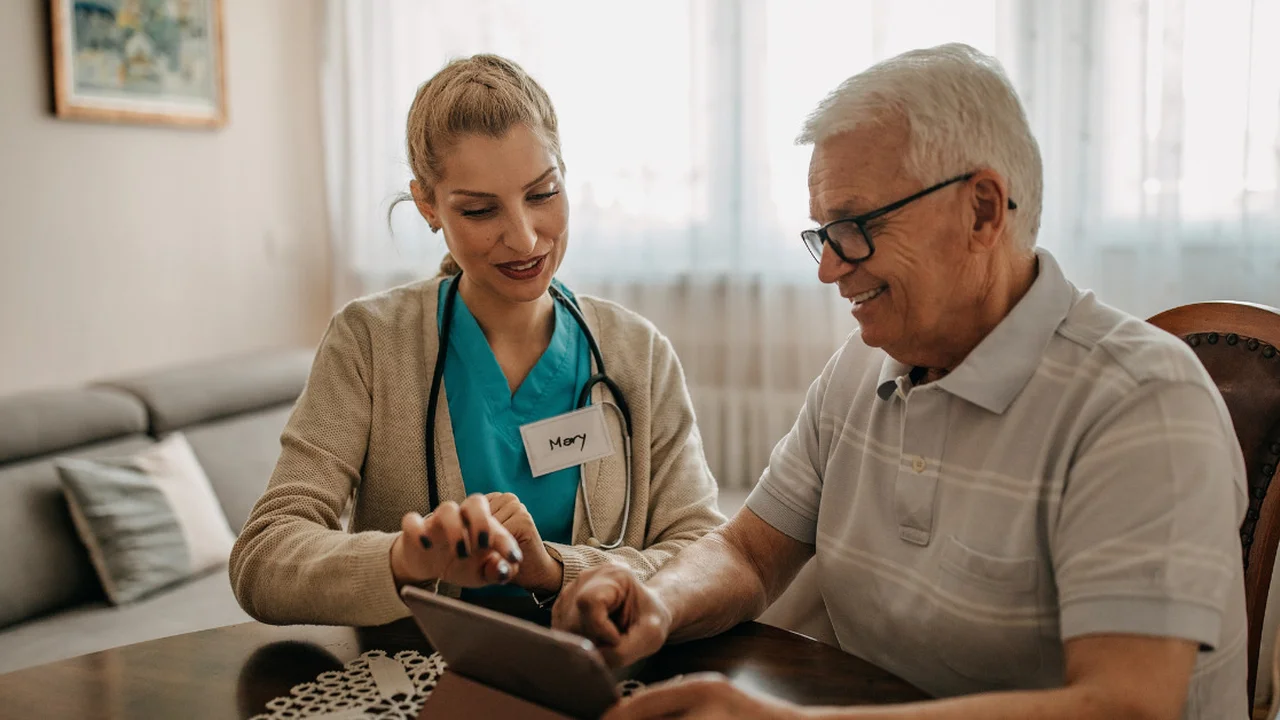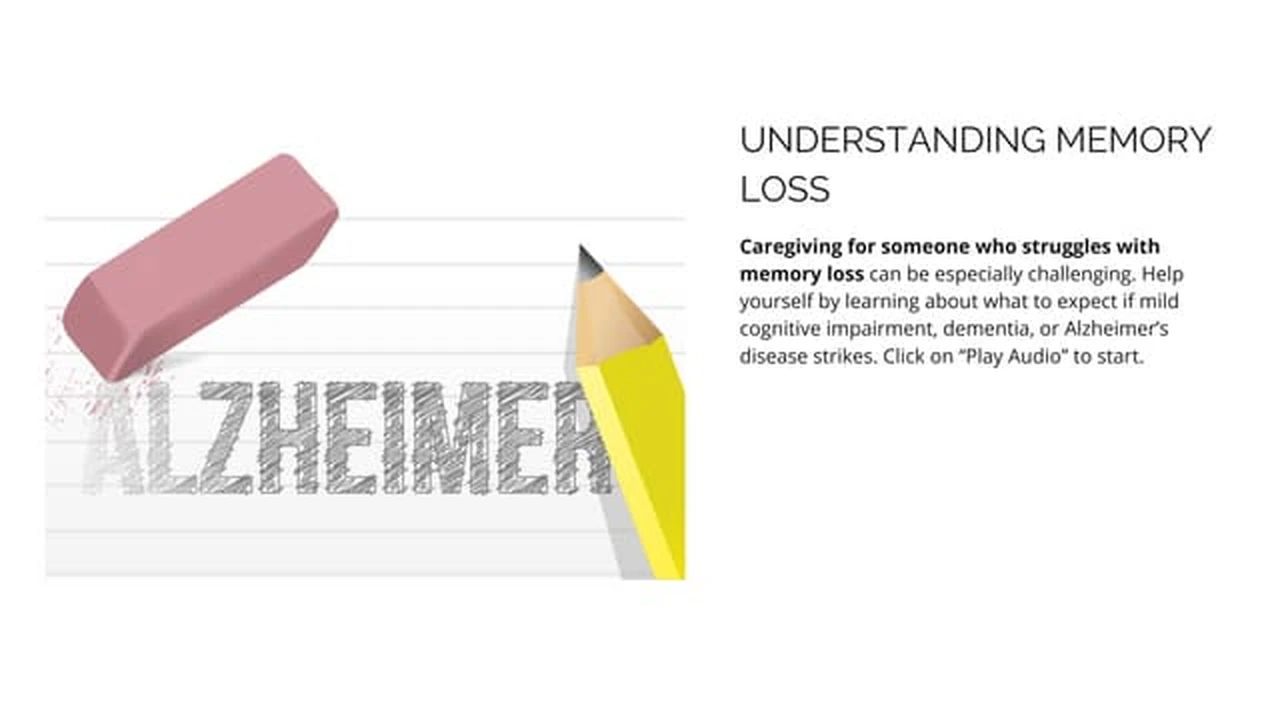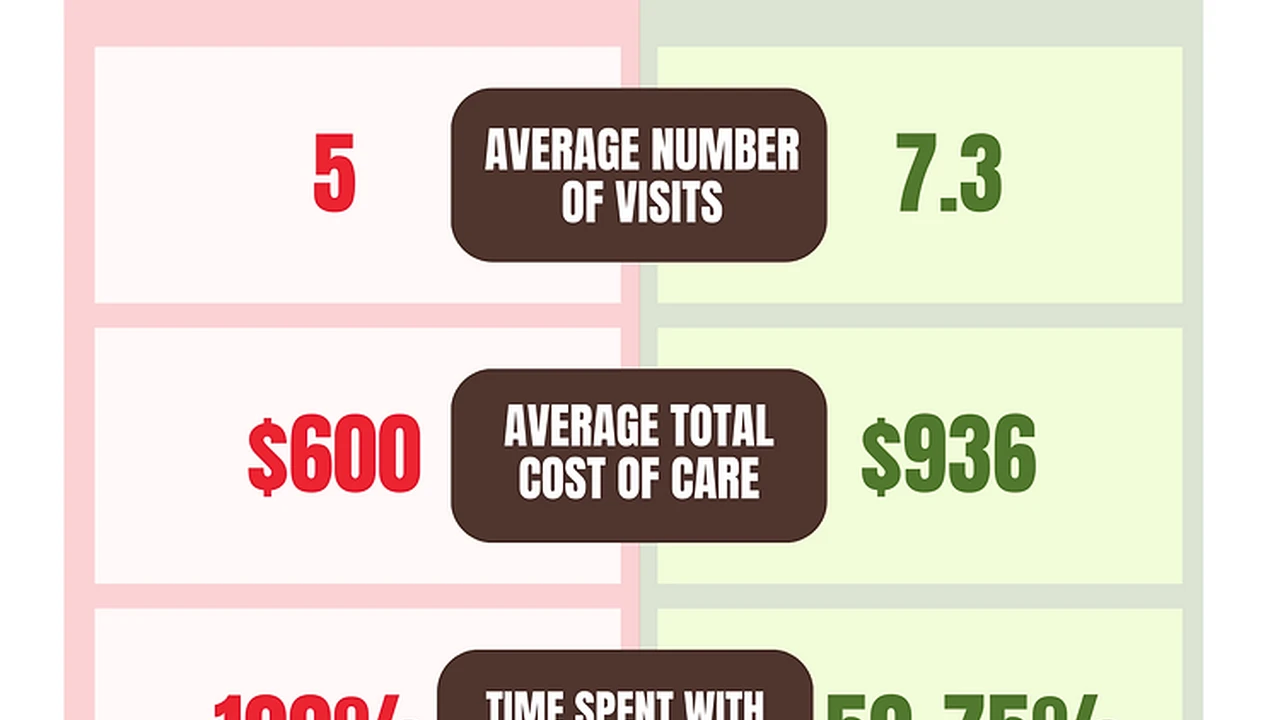7 Benefits of In-Home Care for Seniors
Learn about the key advantages of receiving care at home, including comfort, familiarity, and personalized attention.

7 Benefits of In-Home Care for Seniors
Understanding In-Home Care What It Is and Why It Matters
When it comes to senior care, many families face a crucial decision: should their loved one move to a facility, or can they continue to thrive in the comfort of their own home? In-home care, also known as home care or in-home support, offers a compelling alternative to institutional living. It encompasses a wide range of services provided directly in a senior's residence, designed to support their independence, health, and well-being. This can range from assistance with daily activities like bathing and dressing to skilled nursing care, all delivered by trained professionals. The primary goal is to allow seniors to age in place, maintaining their routines and connections within their familiar environment. For many, the thought of leaving their cherished home, filled with memories and personal belongings, can be daunting. In-home care addresses this by bringing the necessary support directly to them, fostering a sense of security and continuity. It’s not just about physical assistance; it’s about preserving dignity, promoting emotional health, and ensuring a high quality of life as seniors navigate the challenges of aging. This approach is gaining significant traction in both the US and Southeast Asian markets, as families increasingly prioritize personalized, culturally sensitive care options that keep loved ones close to home and community.
Benefit 1 Comfort and Familiarity The Unmatched Value of Home
There’s truly no place like home, especially for seniors. One of the most significant advantages of in-home care is the ability to remain in a familiar and comfortable environment. This isn't just about physical surroundings; it's about the emotional and psychological benefits that come with staying in a place filled with personal history, cherished memories, and established routines. Imagine waking up in your own bed, surrounded by your own furniture, photographs, and possessions. This sense of familiarity can be incredibly reassuring, reducing stress and anxiety, particularly for those experiencing cognitive decline. For seniors, maintaining their daily rituals – whether it’s having coffee on their favorite porch, tending to a small garden, or simply knowing where everything is – contributes significantly to their overall well-being and sense of independence. In contrast, moving to an unfamiliar facility, no matter how well-appointed, can be disorienting and emotionally taxing. The transition often involves adjusting to new schedules, new faces, and a new physical layout, which can be particularly challenging for older adults. In-home care eliminates this disruption, allowing seniors to continue living life on their own terms, within the sanctuary of their own home. This continuity of environment fosters a sense of security and belonging that is difficult to replicate elsewhere, making it a cornerstone of dignified aging.
Benefit 2 Personalized Attention Tailored Care Plans for Unique Needs
Unlike the often standardized care provided in facilities, in-home care offers a level of personalization that is truly unparalleled. Each senior is a unique individual with distinct needs, preferences, and routines. In-home care providers excel at creating highly customized care plans that directly address these specific requirements. This means that the care is not a one-size-fits-all approach but rather a dynamic strategy that adapts to the evolving needs of the individual. For example, if a senior needs assistance with bathing but prefers to do it in the morning, the caregiver can accommodate that. If they have specific dietary restrictions or cultural preferences for meals, the care plan can incorporate those. This personalized attention extends beyond basic physical care to include emotional and social support. Caregivers can engage in activities that the senior genuinely enjoys, whether it's reading, playing cards, or simply having a meaningful conversation. This one-on-one interaction fosters a strong bond between the senior and their caregiver, leading to a deeper understanding of their needs and a more effective care delivery. In a facility setting, caregivers often have multiple residents to attend to, making it challenging to provide this level of individualized focus. The dedicated attention from an in-home caregiver ensures that the senior's physical, emotional, and social needs are met with precision and compassion, promoting a higher quality of life and greater satisfaction with their care experience.
Benefit 3 Maintaining Independence and Dignity Empowering Seniors to Thrive
One of the most profound benefits of in-home care is its ability to help seniors maintain a significant degree of independence and dignity. For many older adults, the loss of independence is a deeply distressing aspect of aging. In-home care is designed to support, rather than replace, a senior's capabilities. Caregivers assist with tasks that have become challenging, allowing seniors to continue performing activities they can manage on their own. This might mean helping with meal preparation while the senior still chooses the menu, or assisting with dressing while allowing them to select their own clothes. This approach empowers seniors to retain control over their daily lives and make their own choices, which is crucial for their self-esteem and mental well-being. The ability to continue living in their own home, surrounded by their personal belongings and memories, reinforces their sense of identity and autonomy. They can maintain their social connections within their community, continue hobbies, and follow their own schedule, rather than adhering to a facility's timetable. This preservation of independence is not just about physical tasks; it's about fostering a sense of purpose and self-worth. By providing support where it's needed most, in-home care allows seniors to age gracefully, with their dignity intact, and continue to live a life that reflects their personal values and preferences. It’s about enabling them to be active participants in their own care, rather than passive recipients.
Benefit 4 Cost-Effectiveness Comparing In-Home Care with Facility Costs
While the perception often exists that in-home care is more expensive, it can frequently be a more cost-effective solution than facility-based care, especially when considering the full spectrum of services and the duration of care. The cost of assisted living facilities or nursing homes can quickly accumulate, often including charges for room and board, meals, activities, and various levels of care, which can sometimes be bundled in ways that don't perfectly align with a senior's actual needs. In contrast, in-home care typically offers a more flexible, à la carte pricing structure. Families can choose the specific services and the number of hours needed, allowing them to tailor the care to their budget and their loved one's requirements. For seniors who only need a few hours of assistance per day or week, in-home care is almost always more affordable than the fixed, higher costs of a residential facility. Even for those requiring more extensive care, the absence of room and board fees can make a significant difference. Furthermore, many long-term care insurance policies cover in-home care, and some government programs, like Medicaid in the US or specific social welfare programs in Southeast Asian countries, may offer financial assistance for eligible individuals. When evaluating costs, it's essential to consider not just the hourly rate but the overall value, including the emotional and psychological benefits of remaining at home. For many families, the ability to preserve assets and avoid the higher fixed costs of facilities makes in-home care a financially prudent choice, allowing resources to be allocated more efficiently to direct care needs.
Benefit 5 Enhanced Safety and Health Outcomes Reducing Risks at Home
While facilities are designed with safety in mind, the familiar environment of one's own home, when properly adapted and supported by in-home care, can offer unique safety and health advantages. For instance, seniors in their own homes are often less exposed to infectious diseases, such as influenza or norovirus, which can spread rapidly in communal living settings. This has become particularly relevant in recent years, highlighting the importance of minimizing exposure to pathogens. Furthermore, in-home caregivers can focus solely on one individual, allowing for more vigilant monitoring of health changes, medication adherence, and potential safety hazards. They can ensure that medications are taken on time and correctly, assist with mobility to prevent falls, and identify early signs of illness or decline that might be missed in a busier environment. Home modifications, such as grab bars, ramps, and improved lighting, can be implemented to create a safer living space tailored to the senior's specific needs, further reducing the risk of accidents. Caregivers can also assist with meal preparation, ensuring proper nutrition and hydration, which are crucial for maintaining overall health and preventing complications. The personalized attention means that any health concerns can be addressed promptly, often preventing minor issues from escalating into more serious conditions. This proactive and individualized approach to health and safety contributes significantly to better overall health outcomes and a higher quality of life for seniors receiving care at home.
Benefit 6 Family Involvement and Peace of Mind Strengthening Bonds
In-home care significantly facilitates greater family involvement in a senior's life and care, offering immense peace of mind to loved ones. When a senior remains at home, family members can visit freely, without the restrictions often imposed by facility visiting hours or protocols. This allows for more frequent and spontaneous interactions, strengthening family bonds and ensuring that seniors remain an integral part of family life. Family members can also be more directly involved in the care planning process, working closely with caregivers to ensure that their loved one's preferences and needs are met. This collaborative approach fosters a sense of shared responsibility and allows families to feel more connected to the care their loved one is receiving. Knowing that a trusted professional is providing dedicated, one-on-one care in a familiar environment can alleviate much of the stress and worry that often accompanies senior care decisions. Families can rest assured that their loved one is safe, comfortable, and receiving personalized attention, even when they cannot be there themselves. This peace of mind extends to knowing that the senior's routines are being maintained, their emotional needs are being addressed, and their dignity is being preserved. For families, the ability to maintain a strong presence in their loved one's life, coupled with the assurance of professional support, makes in-home care an invaluable option, fostering a sense of security and well-being for everyone involved.
Benefit 7 Flexibility and Adaptability Evolving Care as Needs Change
One of the standout features of in-home care is its inherent flexibility and adaptability, making it an ideal solution for seniors whose needs may evolve over time. Unlike the more rigid structures of facility care, in-home care plans can be easily adjusted to accommodate changing health conditions, preferences, or levels of required assistance. For instance, a senior might initially only need a few hours of companion care per week. As their needs progress, perhaps due to a new diagnosis or increased frailty, the care plan can be seamlessly scaled up to include more extensive personal care, skilled nursing visits, or even 24/7 live-in care. This adaptability means that seniors don't have to undergo disruptive transitions from one care setting to another as their requirements change. They can continue to receive the appropriate level of support in the comfort of their own home, minimizing stress and maintaining continuity of care. This flexibility also extends to scheduling, allowing families to adjust care times and frequencies to best suit their loved one's routine and their own schedules. Whether it's temporary post-operative care, long-term chronic illness management, or end-of-life support, in-home care can be tailored to meet a wide spectrum of needs. This dynamic approach ensures that seniors always receive the right care at the right time, without the need for drastic changes in their living situation, providing a stable and supportive environment throughout their aging journey.
Recommended In-Home Care Products and Services Enhancing Senior Living
To truly maximize the benefits of in-home care, integrating specific products and services can significantly enhance safety, comfort, and independence. Here are some top recommendations, including specific product examples, usage scenarios, comparisons, and pricing information, catering to both US and Southeast Asian markets where applicable.
Medical Alert Systems Personal Safety and Emergency Response
Medical alert systems are crucial for seniors living at home, providing immediate access to help in emergencies, especially falls. These systems typically consist of a wearable device (pendant or wristband) with a button that, when pressed, connects the user to a 24/7 monitoring center. The center then dispatches emergency services or contacts designated family members.
- Product Example 1: Life Alert
Usage Scenario: A senior living alone experiences a fall in the bathroom. They press their Life Alert pendant, and within seconds, a dispatcher is on the line, assessing the situation and sending paramedics. The system also has a 'Help' button for non-emergency assistance.
Features: Waterproof pendant, 24/7 monitoring, two-way voice communication, optional fall detection. Known for its long-standing reputation.
Comparison: Life Alert is a premium service, often more expensive but with a strong brand presence and reliable service. It's a good choice for those prioritizing established reliability.
Pricing: Typically starts around $30-$50 per month for basic service, with additional costs for fall detection or mobile units. Installation fees may apply. - Product Example 2: Medical Guardian (US) / Safe Steps (Southeast Asia - e.g., Singapore)
Usage Scenario: An active senior goes for a walk in the park and feels dizzy. They use their mobile medical alert device to call for help, and the GPS tracking allows emergency services to locate them quickly.
Features: Mobile GPS-enabled devices, in-home systems, fall detection, caregiver tracking apps. Medical Guardian offers a range of devices, including smartwatches. Safe Steps in Singapore offers similar mobile solutions with local monitoring.
Comparison: Medical Guardian offers more modern, discreet devices and flexible plans, often appealing to more active seniors. Safe Steps provides localized support and understanding of regional emergency services. Both offer good value for money with advanced features.
Pricing: Medical Guardian plans range from $29.95 to $49.95 per month. Safe Steps (Singapore) plans can range from S$30-S$60 per month, depending on features. - Product Example 3: Bay Alarm Medical
Usage Scenario: A senior with limited mobility needs a system that works both inside and outside their home. Bay Alarm Medical's in-home and mobile options provide continuous coverage.
Features: In-home systems, mobile GPS devices, car-based systems, fall detection. Known for excellent customer service.
Comparison: Bay Alarm Medical is often praised for its customer service and transparent pricing. It strikes a good balance between features and affordability.
Pricing: Starts around $24.95 per month for basic in-home, up to $39.95 for mobile with fall detection.
Smart Home Devices for Senior Safety and Convenience
Smart home technology can significantly enhance safety, convenience, and peace of mind for seniors and their families.
- Product Example 1: Google Nest Hub Max / Amazon Echo Show
Usage Scenario: A senior wants to make a video call to their grandchild, check the weather, or set a reminder for medication. They can do this hands-free using voice commands. Family members can also 'drop in' for a quick check-in.
Features: Video calling, voice assistant, smart home control, digital photo frame, medication reminders. Nest Hub Max has a camera for video calls and security monitoring. Echo Show offers similar features with Alexa.
Comparison: Both are excellent choices. Google Nest Hub Max integrates well with Google services and has a slightly better camera for video calls. Amazon Echo Show has a broader range of compatible smart home devices and a more mature voice assistant ecosystem. The choice often comes down to personal preference and existing smart home ecosystems.
Pricing: Google Nest Hub Max: ~$229. Amazon Echo Show 8: ~$129, Echo Show 10: ~$249. - Product Example 2: Smart Lighting Systems (e.g., Philips Hue, Lutron Caséta)
Usage Scenario: A senior needs to get up in the middle of the night. Motion-activated smart lights in hallways and bathrooms automatically illuminate, preventing falls. Lights can also be controlled via voice or a smartphone app.
Features: Dimmable lights, color changing, scheduling, motion sensor integration, voice control. Can be integrated with other smart home devices.
Comparison: Philips Hue offers a wide range of bulbs and fixtures with vibrant colors and extensive smart home integration. Lutron Caséta focuses more on reliable dimming and switch control, often preferred for whole-home solutions. Both significantly improve safety by eliminating fumbling for light switches.
Pricing: Philips Hue starter kits range from $70-$200. Individual bulbs are $15-$50. Lutron Caséta starter kits are $100-$200. - Product Example 3: Smart Door Locks (e.g., August Smart Lock, Schlage Encode)
Usage Scenario: A family caregiver needs to enter the senior's home to provide care or check on them, but the senior is asleep or unable to get to the door. The caregiver can unlock the door remotely via a smartphone app. Emergency services can also be granted temporary access.
Features: Keyless entry, remote access, activity logs, auto-lock/unlock, integration with smart home platforms.
Comparison: August Smart Lock is a retrofit solution that fits over existing deadbolts, making installation easy. Schlage Encode is a full replacement lock with a built-in keypad and Wi-Fi. Both offer robust security and convenience. August is often preferred for renters or those who don't want to change their existing lock hardware.
Pricing: August Smart Lock: ~$150-$250. Schlage Encode: ~$200-$300.
Medication Management Devices Ensuring Adherence
Medication adherence is critical for senior health. These devices help ensure medications are taken correctly and on time.
- Product Example 1: Automated Pill Dispensers (e.g., MedMinder, PillDrill)
Usage Scenario: A senior has multiple medications to take at different times throughout the day. The dispenser lights up and sounds an alarm when it's time for a dose, dispensing only the correct pills. If a dose is missed, family members or caregivers are alerted.
Features: Timed dispensing, audible and visual alerts, remote monitoring by family/caregivers, locking mechanisms to prevent overdosing.
Comparison: MedMinder is a subscription-based service that pre-fills and delivers medication, offering a comprehensive solution. PillDrill is a smart pillbox that tracks medication adherence and sends reminders. MedMinder is better for complex regimens and those needing full management, while PillDrill is good for self-management with reminders.
Pricing: MedMinder: ~$50-$70 per month (device rental + monitoring). PillDrill: ~$199 for the device, no monthly fee. - Product Example 2: Smart Water Bottles (e.g., HidrateSpark, Thermos Smart Lid)
Usage Scenario: A senior often forgets to drink enough water, leading to dehydration. A smart water bottle tracks their intake and glows to remind them to drink, syncing data to a smartphone app for family monitoring.
Features: Hydration tracking, glowing reminders, app integration, personalized hydration goals.
Comparison: HidrateSpark offers more advanced tracking and integration with fitness apps. Thermos Smart Lid is a simpler, more affordable option that turns any bottle into a smart one. Both are effective for encouraging consistent hydration.
Pricing: HidrateSpark: ~$45-$70. Thermos Smart Lid: ~$20-$30.
Remote Monitoring and Communication Tools Staying Connected
These tools help families stay connected and monitor their loved ones from a distance, providing reassurance without being intrusive.
- Product Example 1: Caregiver Monitoring Apps (e.g., CareZone, CaringBridge)
Usage Scenario: A family spread across different states needs to coordinate care, share updates, and manage appointments for their aging parent. These apps provide a centralized platform for communication and organization.
Features: Shared calendars, medication lists, health journals, secure messaging, document storage. CaringBridge focuses more on health updates and support networks, while CareZone is for daily care management.
Comparison: CareZone is excellent for practical care coordination and information sharing among a care team. CaringBridge is more focused on sharing health updates with a wider circle of family and friends for emotional support. Both are free and highly valuable.
Pricing: Free. - Product Example 2: Passive Monitoring Sensors (e.g., GrandCare Systems, WellAware)
Usage Scenario: A family wants to ensure their senior loved one is moving around and maintaining their routine without using cameras. Small, discreet sensors placed around the home detect activity patterns, alerting caregivers to significant deviations.
Features: Motion sensors, door sensors, bed sensors, temperature monitoring, activity tracking, alerts for unusual patterns. No cameras, preserving privacy.
Comparison: GrandCare Systems offers a comprehensive platform with activity monitoring, telehealth, and communication features. WellAware focuses specifically on discreet activity monitoring. GrandCare is more robust for a full suite of services, while WellAware is ideal for privacy-focused activity tracking.
Pricing: GrandCare Systems: Varies widely based on package, often $100-$300 for equipment and $50-$100 monthly. WellAware: ~$100-$200 for sensors, $20-$40 monthly.
Choosing the Right In-Home Care Products and Services for Your Loved One
Selecting the appropriate in-home care products and services requires careful consideration of several factors. First and foremost, assess the senior's specific needs and preferences. Do they have mobility issues? Are they prone to forgetting medication? Do they value privacy above all else? Understanding these individual requirements will guide your choices. Next, consider the senior's comfort level with technology. While smart devices offer incredible benefits, some seniors may find them overwhelming. Opt for user-friendly interfaces and provide thorough training and support. Budget is another critical factor; while many products offer advanced features, there are often more affordable alternatives that still provide essential safety and convenience. Research local availability and support for these products, especially in Southeast Asian markets where product availability and technical support might vary. Finally, involve the senior in the decision-making process as much as possible. Their input is invaluable in ensuring that the chosen solutions are not only effective but also well-received and utilized. A holistic approach, combining professional in-home care services with carefully selected technological aids, can create a truly supportive, safe, and empowering environment for seniors to age gracefully in their cherished homes. This thoughtful integration ensures that the benefits of in-home care are fully realized, providing peace of mind for both seniors and their families.
:max_bytes(150000):strip_icc()/277019-baked-pork-chops-with-cream-of-mushroom-soup-DDMFS-beauty-4x3-BG-7505-5762b731cf30447d9cbbbbbf387beafa.jpg)





